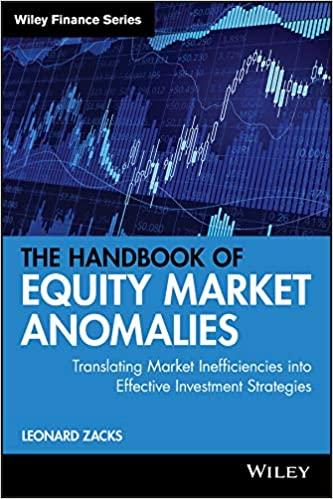Valuation without Taxes: Weighted Average Cost of Capital (WACC) Approach To better understand the effects of debt, which are related to the existence of tax deductibility, it is useful to first consider a world with a zero marginal tax rate. The usual formulas still apply, but the tax rate is set to zero. We will assume that given the risks of our simple firm and assuming the firm was entirely financed with equity, the beta of the equity- would equal 0.80. This is the unleveraged beta referred to in Equation 1. Furthermore, we will assume the risk-free rate of return is equal to 6.0%. This is the same as the interest rate on debt, which implies that the debt is riskless. Finally, assume that the market risk premium is equal to 5.5%. Fill out the Table 2 assuming first that there is no debt and then assuming debt, as described earlier, equal to $380,000. We will value the company using the WACC approach discounting free cash flow by the WACC. To do this, you must have a measure of the proportion of debt financing based on market values, but the firm's market value (enterprise value) is unknown. A proportion is assumed below, and you will verify it is consistent with the results. You will also calculate the difference in enterprise values between the Debt and No Debt cases. Table 2. Value of the company using the WACC approach. EBIT No Debt 104,000 0 104,000 O 0 104,000 Debt = $380,000 104.000 0 104,000 Tax NOPAT Change in net PPE Change in NWC Free cash flow 0 104,000 0.80. 0.38 Unleveraged beta Proportion of debt Debt to equity Leveraged beta Cost of equity (use CAPM) 0.80 0.00 0.00 0.80 WACC Enterprise value Difference in enterprise values Calculate ratio of debt to enterprise value Provide an intuitive explanation for your results regarding the difference in enterprise values. Valuation without Taxes: Weighted Average Cost of Capital (WACC) Approach To better understand the effects of debt, which are related to the existence of tax deductibility, it is useful to first consider a world with a zero marginal tax rate. The usual formulas still apply, but the tax rate is set to zero. We will assume that given the risks of our simple firm and assuming the firm was entirely financed with equity, the beta of the equity- would equal 0.80. This is the unleveraged beta referred to in Equation 1. Furthermore, we will assume the risk-free rate of return is equal to 6.0%. This is the same as the interest rate on debt, which implies that the debt is riskless. Finally, assume that the market risk premium is equal to 5.5%. Fill out the Table 2 assuming first that there is no debt and then assuming debt, as described earlier, equal to $380,000. We will value the company using the WACC approach discounting free cash flow by the WACC. To do this, you must have a measure of the proportion of debt financing based on market values, but the firm's market value (enterprise value) is unknown. A proportion is assumed below, and you will verify it is consistent with the results. You will also calculate the difference in enterprise values between the Debt and No Debt cases. Table 2. Value of the company using the WACC approach. EBIT No Debt 104,000 0 104,000 O 0 104,000 Debt = $380,000 104.000 0 104,000 Tax NOPAT Change in net PPE Change in NWC Free cash flow 0 104,000 0.80. 0.38 Unleveraged beta Proportion of debt Debt to equity Leveraged beta Cost of equity (use CAPM) 0.80 0.00 0.00 0.80 WACC Enterprise value Difference in enterprise values Calculate ratio of debt to enterprise value Provide an intuitive explanation for your results regarding the difference in enterprise values








